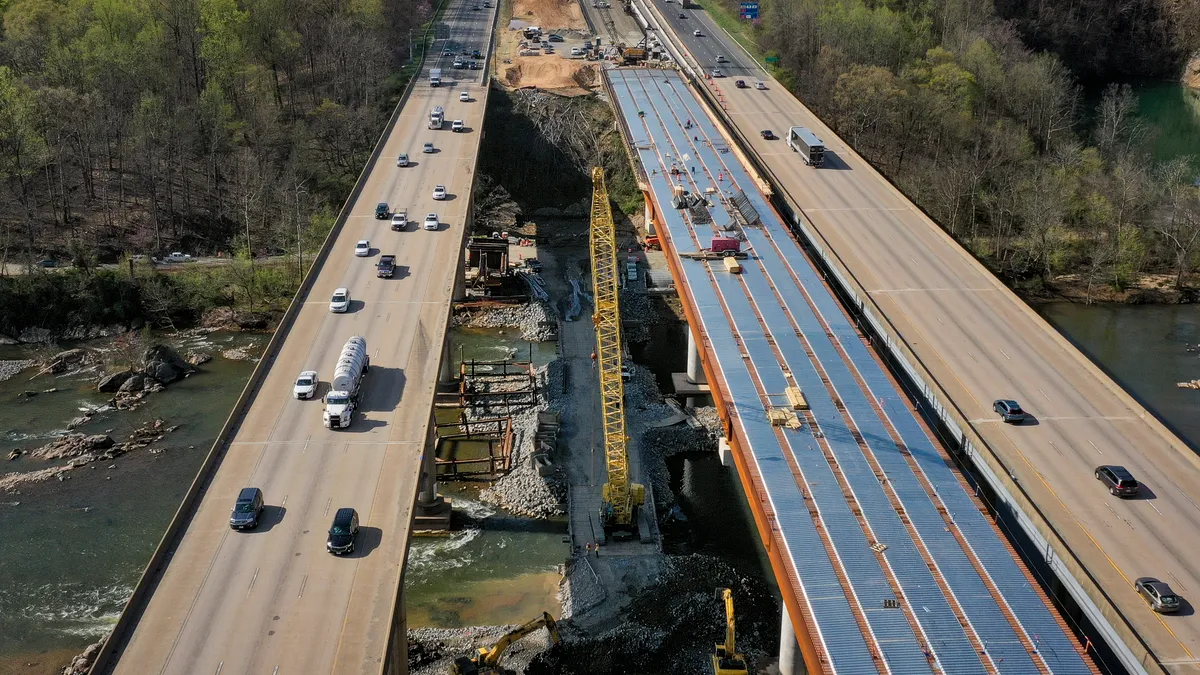Dive Brief:
- While contractors wait for infrastructure funding to kick in, money from last year's $1.9 trillion American Rescue Plan is already flowing to projects they can benefit from, according to an analysis from politics blog FiveThirtyEight.
- The site looked at the $350 billion of federal aid in the legislation carved out for states and municipalities, and how they've been spending it.
- Major construction-related categories include $11 billion for water infrastructure, $9 billion for infrastructure such as highways and prisons and $8 billion for broadband. Workforce development, another area of keen interest to contractors who are starved for skilled workers, received $6 billion.
Dive Insight:
Unlike funding connected to the Infrastructure Investment and Jobs Act, which prioritizes project labor agreements and employing union labor on public projects, the money that flowed to state, local and tribal governments through the ARP had few strings attached to how recipients could spend it.
Since most states have a legal obligation to balance their budgets every year, surpluses like this are rare, the article points out, and state and community leaders have jumped on the opportunity to put it to use.
For example, Alabama plans to use $400 million to build two new prisons, according to the article, despite pushback from civil liberties groups and a Treasury Department order against it. Alabama also allocated 35% of its ARP funds to broadband, 30% to water and sewer projects and 20% to healthcare, according to the Alabama Political Reporter.
The money has been disbursed in large chunks, with about $155 billion going to states in 2021, according to the Center on Budget and Policy Priorities; the rest will come later this year. The states have until 2026 to use it, according to the article, meaning the funding should continue to bolster local and state spending for some time.
That budgeting cadence lends itself particularly well to large infrastructure projects.
For example, Florida earmarked $10.3 billion toward its State Transportation Work Program, which is an ongoing five-year plan for completing infrastructure projects, in the Florida Recovery Plan, using both state and ARP money. In total, Florida will receive $8.8 billion in ARP funds.
Other programs
Spending on broadband by the states is particularly widespread. According to the National Conference of State Legislatures, 22 states have designated funds to improving broadband access, particularly in rural areas.
"Within states, this has meant a mix of new programs, funding for existing programs and expansion of broadband services to more rural areas where the lack of access to reliable, fast internet made it harder for some children to attend virtual school during lockdowns," the FiveThirtyEight article said.
One target of the funds could be viewed as a negative by contractors. Many construction firms struggled during the pandemic to find enough workers and pointed to enhanced unemployment benefits as one reason why workers stayed home.
But around 60 cities nationally are planning to use ARP funds, along with other private money, to launch universal minimum income projects, according to the article. California recently allocated $35 million to become the first state with some form of a guaranteed income program.
But the biggest takeaway, according to FiveThirtyEight, is that states are all using the money, and will continue to do so, with no states so far rejecting the money. That should provide a partial spending bridge at the state and local level until IIJA funds turn planned public works projects into reality.















